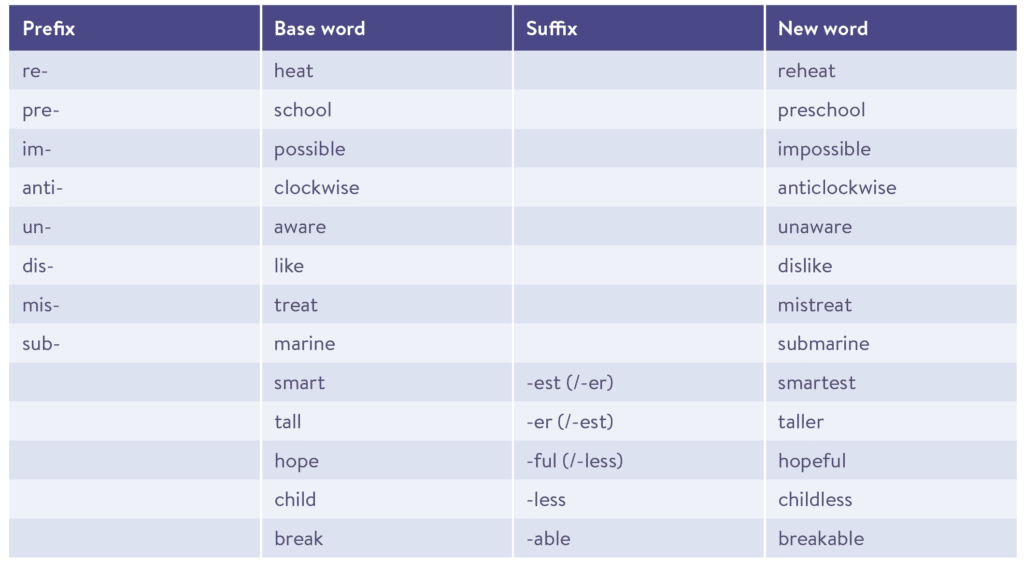Vocabulary and morphology
Home » Vocabulary » Vocabulary and morphology
Using morphology to infer word meaning
Often, understanding an unknown word can be aided by good knowledge of English morphology. Morphemes are the parts of words that convey meaning. Some words have only one morpheme, such as ‘run’ or ‘chair’. Some words are built from several morphemes. For example, the word ‘teaching’ has two morphemes, ‘teach’ and ‘ing’.
Prefixes are a good place to start instruction on morphemes, because they often have one of two purposes. The first purpose is to give a base word direction (e.g., ex = out; sub = under; re = do again; Rasinski et al., 2020). The second purpose is to negate the base word’s meaning (e.g., un, il = not; Rasinski et al., 2020). It may therefore be useful to structure lessons to teach negating prefixes together, or to contrast different directional prefixes together (e.g., review vs. preview).
Greek and Latin bases can be a little more complex (because we may not recognise them as standalone words in English), although they are usually still associated with meanings that are straightforward to explain (e.g., ambi, graph, ology).
One example of a morphology teaching activity is word building.
Word building activity using morphemes
1. Prepare a list of base words and a set of affix cards that can be attached to the start or end of one of the root words – see the table below for an example.
2. In pairs or small groups, students take turns to flip affix cards face-up and decide which base word the upturned card can meaningfully attach to.
3. The ‘flipper’ says the new word aloud and defines it.
4. All students in the pair or group write down the new word alongside a definition of that word and a sentence containing the word.
5. As an extension, students can be asked to incorporate the words (or others with prefixes that they can think of independently) into a written passage or story.

Comprehension strategies
In the context of vocabulary acquisition, comprehension strategies can help students actively notice and respond when they don’t understand an unfamiliar word (Shanahan et al., 2010). One way to teach a number of comprehension strategies together is to use a reciprocal teaching approach. This is quite a complex metacognitive activity so is best used with students in middle to upper primary.
Importantly, students’ learning of the four strategies is likely to reach a ceiling after a certain number of lessons. This means it does not need to be employed for very long. Studies that have found the approach to be effective have, on average, used it twice weekly for six weeks (Bell, 2020).
Reciprocal teaching of comprehension strategies
1. Divide students into small groups of four.
2. Allocate roles of ‘summariser’, ‘questioner’, ‘predicter’ and ‘clarifier’ to each student.
3. Model what you want the students to do: After reading a portion of text aloud, concisely summarise the key points; ask questions about the text’s content or related themes; clarify the meaning of unfamiliar words through discussion; and predict what the text will be about, drawing on contextual cues and prior knowledge of the topic.
4. Repeat the process, this time asking the students to take responsibility for reading the text and employing the four strategies. Where necessary, facilitate discussion and talk through the steps for completing each strategy.
5. Rotate students through each role. Ultimately, the goal is for students to facilitate their own independent discussion within the group.
